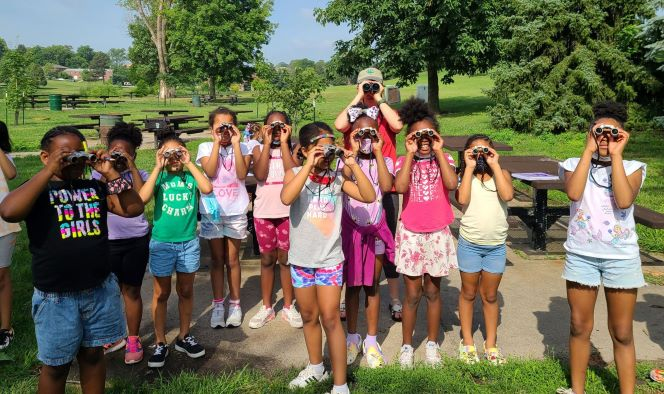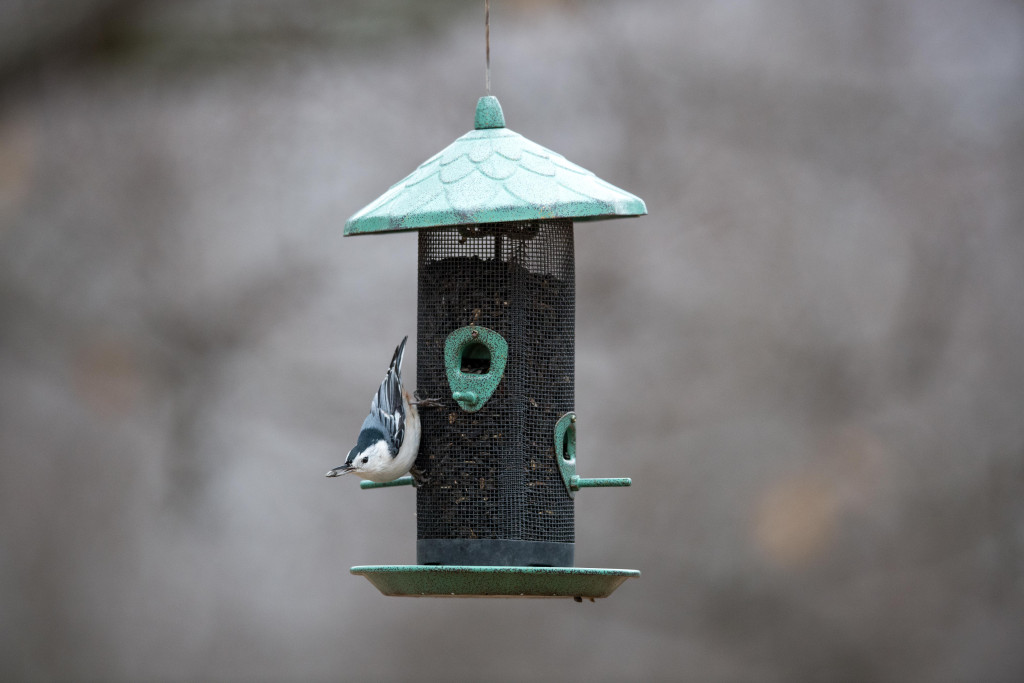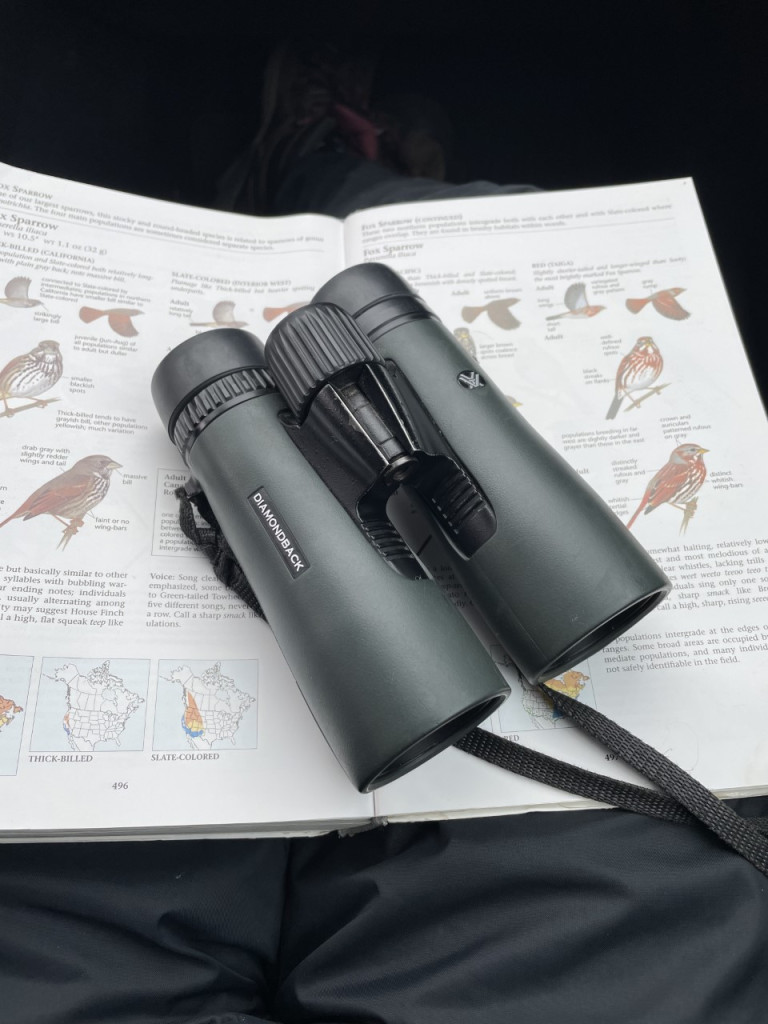Enlarge

Students learning how to use binoculars. Photo by Amber Schiltz.
By Alie Mayes, Community Science Education Specialist
Are you a bird nerd? Maybe you like to casually watch birds visit your backyard feeder. Or perhaps you visit local green spaces in hopes of spotting some of your favorite feathered friends. Or maybe you have only recently started noticing the birds that you see every day.
Whether you are new to bird watching or have been enjoying it for years, community science is a great way to level up your hobby by contributing useful data to bird research. Keep reading to learn about four bird-y community science projects you can join.

The Big Sit
You probably know about tailgating for sports, but have you ever tailgated for the birds? The Big Sit is an annual community science event that asks participants to sit back and count birds. So how does it work? Local organizers will choose a location and create a “sit circle”. Participants meet at the 17-meter sit circle the day of the event and count all the birds that can be seen from the circle, all the while relaxing in nature and enjoying snacks and conversation with like-minded people. The Nebraska Game and Parks Commission is hosting two Big Sit events: Visit the Wildcat Hills Nature Center in Gering on Oct. 8, 7 a.m. – 1 p.m., or Holmes Lake in Lincoln on Oct. 9, 7 a.m. to 2 p.m.

Project FeederWatch
Do you feed birds in your yard? Project FeederWatch is all about documenting the birds that come to visit your feeders. This project is super user-friendly with easy-to-follow resources and project guidelines. The project is hosted through the Cornell Lab of Ornithology and has been active for over 30 years. The data collected is being used to learn more about long-term bird distributions, winter bird ranges and even how disease can spread among feeders. For more information about how to get started with this project, visit https://feederwatch.org.
Christmas Bird Count
The Audubon Christmas Bird Count is going to be 123 years strong this season. The CBC takes place every Dec. 14 -Jan. 5. Teams work together to count all the birds they can find during one day within their 15-mile diameter count circle. The data collected from this long-standing project has fueled over 300 peer-reviewed articles. The CBC is truly an example of the power of community science. To learn how to get involved with a CBC near you, visit audubon.org or contact Jason.StSauver@audubon.org.

The Great Backyard Bird Count
The Great Backyard Bird Count is a global community science event hosted by the Cornell Lab of Ornithology. This event has the goal to connect people to birds, nature and each other. The event requires little time commitment — participants are requested to watch birds for at least 15 minutes during the four-day window and record the species they see using eBird. The next Great Yard Bird Count will take place Feb. 17- 20, 2023. For more information, visit birdcount.org.
To learn more about community science in Nebraska, visit the Community Scientists of Nebraska Network project directory.
The post Community Science for the Birds appeared first on Nebraskaland Magazine.
















